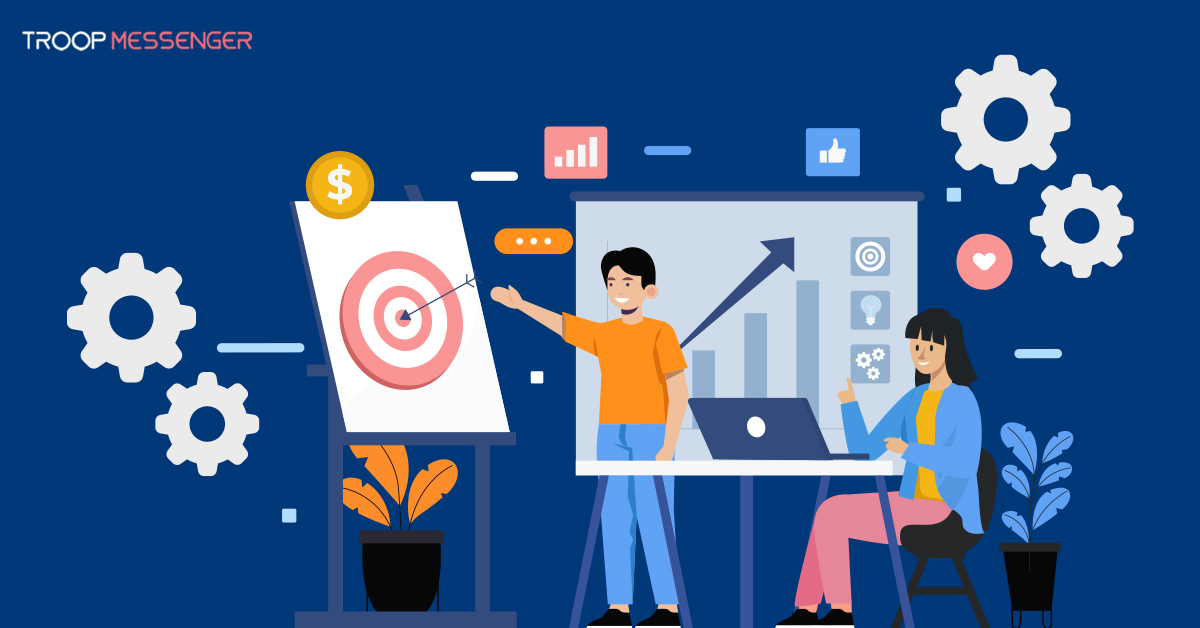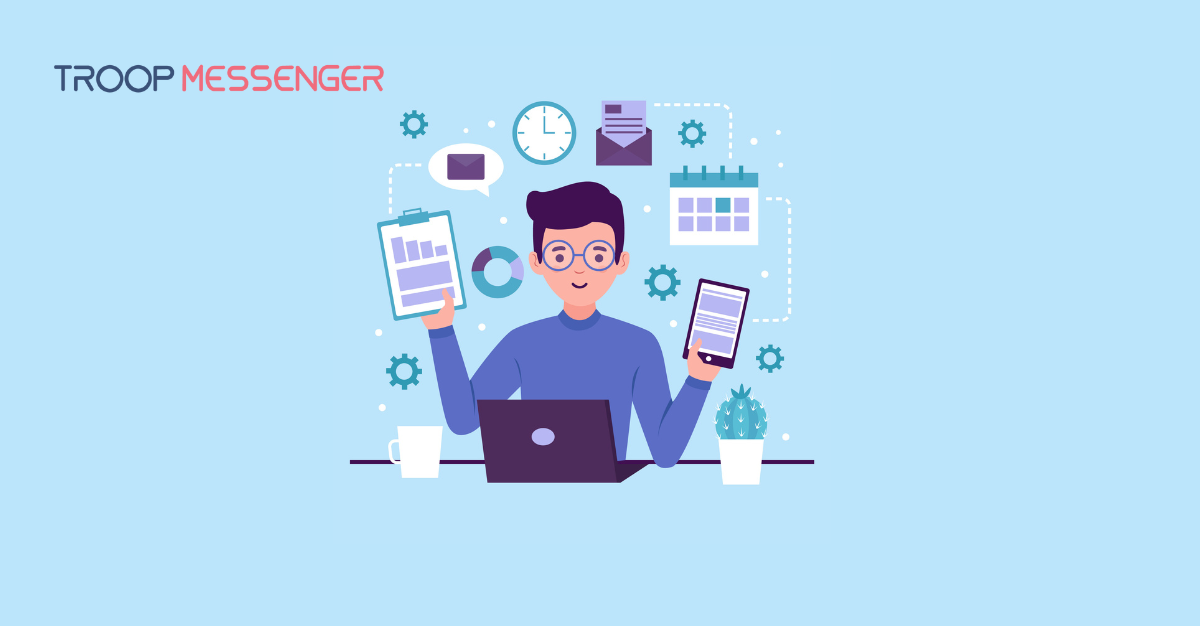Connect with us

10 Effective Inbound Marketing Strategies For SaaS Businesses
“Once you create a loyal customer base, it is hard for a competitor to take that away." Joseph D. Mansueto.
Traditional marketing or outbound marketing involves using distribution methods that are non-targeted while inbound marketing reaches out to the target audience only.
It requires less budget and creates a community around your brand as well.
As per Mashable research, inbound leads are 62% cheaper than outbound leads, and they convert more easily.
This article will discuss ten of the most popular strategies that will help your SaaS business thrive.
with the help of its rapid integration feature, alongside its modular architecture that accredits your developers in customizing the UI frameworks to comfort your advanced users.
1. Content marketing
Content marketing is the main ingredient of any successful inbound marketing strategy.
Content marketing costs 62% less than traditional marketing. It provides useful information to users about your company and products.
High-quality content: Create content that resonates with your audience. It involves addressing their pain points, challenges, and problems. You can write blogs, white papers, articles, ebooks, and video scripts.
Keyword optimization: Conduct thorough keyword research to identify relevant keywords and optimize your content accordingly. These keywords can change with demographics and locations, so target them accordingly.
Distribution: Use every distribution channel at your disposal. Share your content on social media, industry forums, and relevant online communities to reach a wider audience.
Utilize the latest tools like an AI paragraph writer, Grammarly, and ChatGPT to create content faster and easier.
2. Search engine optimization (SEO)
SEO makes your content visible to your target audience. Creating quality content is not enough, it should be present in the top results when a user searches for it on search engines. SEO helps to achieve that.
On-page SEO: Try to add keywords in your content that naturally fit. When you stuff keywords, the content quality decreases. Besides this, optimize your website’s content using proper structure and tags to improve your ranking on SERPs.
Technical SEO: Make sure your website has a faster loading speed. This makes it easier for users to navigate on other pages. Use low-resolution images and ensure your website has a responsive design.
Link-building: Connect with people in your industry to get backlinks. This will work like a shoutout. Additionally, backlinks can be a source of referral traffic that search engines give so much value. Backlinks pass page rank or link juice which helps your website establish authority.
Google launched updates in which they derank websites publishing unhelpful content. Almost all websites that got hit by these updates were those using AI content massively. This doesn’t make AI content bad but the way you’re using it is against the guidelines of Google and many other search engines. In such cases, an AI detector can be a valuable asset for all those who want to ensure the content on their website has AI similarity or not. If there’s any AI plagiarism, remove it so that you don’t see a strict google action.
3. Email marketing
Email marketing remains one of the most effective channels for nurturing leads and retaining customers in the SaaS industry. This strategy involves doing following:
Build an email list: Collect email addresses through website forms, lead magnets, and social media contests.
Segment your list: Create targeted email campaigns based on subscriber interests and preferences. You can segment them according to their demographics, infographics, and stages of the buyer journey.
Personalization: Use personalization to deliver relevant content and offers. Utilize segmentation of the emails to deliver tailored content. I found an online paraphraser a helpful tool for adding personalization to the content. Besides this, there are lots of other tools which you can also use.
This strategy helps you create personalized sales pitches for a customer. You can also gather useful information, like interests and behaviors.
4. Social media marketing
Social media platforms offer SaaS businesses the opportunity to engage with their audience. They can create a brand voice and authority.
Choose platforms: Each platform has its own unique strengths and audience demographics, so it's essential to choose the right channels for your business. Identify the social media platforms where your target audience is most active.
Content sharing: Share valuable content, interact with your followers, and join relevant online communities. Encourage your team members to share company content and engage with their professional networks.
Paid ad campaigns: Target specific demographics and interests with paid social media ads. You can also use social media to conduct research on your target audience. A/B testing and filters can be used for this purpose.
5. Online events
Online events are excellent ways to showcase your expertise, demonstrate your product, and generate leads.
Webinars: These are great when it comes to educating an audience. Choose relevant topics that address your audience's pain points and interests. Narrate your intentions and goals.
Live streams: Go live on your social media channels once in a while to interact with your audience. These interactive sessions allow you to engage directly with potential customers and provide valuable insights. Talk to them, take feedback, answer questions, and encourage suggestions.
Podcasts: This format has become popular recently. Invite industry experts or thought leaders as guest speakers to add credibility and attract a larger audience.
Consider repurposing these events' content into blog posts, video snippets, or social media posts to extend its reach and value.
6. Paid advertising
Invest in paid advertising campaigns such as Google Ads, and social media ads like Meta, LinkedIn, Twitter, etc.
Targeted ads: Use targeted ads to reach potential customers. Apply different filters to narrow down your ideal audience. It will improve the conversion rate and ROI.
A/B testing: Using this feature, you can test different ad creatives, interests, behaviors, and geographical locations for better results. You can check what works for you.
PPC: Some platforms, like Google and Amazon, offer pay-per-click advertisements. You only have to pay for the clicked ads. Various tools, including those for Amazon PPC, can help you adjust and improve ad targeting, allowing for better budget management and audience reach.
7. Video Marketing
Video marketing allows you to convey complex ideas in a simple, engaging, and visually appealing manner. Every week, over 92% of internet users watch online videos worldwide. – Invisia
Product demos: Create detailed product demo videos that highlight key features and functionalities. This helps potential customers understand how your product can solve their problems. To create and share interactive demos seamlessly, invest in a dedicated tool for that purpose such as Reprise or a better Reprise alternative.
Customer Testimonials: Encourage satisfied customers to create and share their own video testimonials. This adds authenticity and can be more persuasive to potential buyers.
Storytelling: Use storytelling techniques to create compelling video content. Write a story that captures your audience’s attention and connects with their emotions. Consider utilizing Story Generator AI to craft amazing narratives effortlessly! “Marketing is no longer about the stuff that you make, but about the stories you tell.”–Seth Godin
Use videos to highlight your company’s mission, values, and journey to build a deeper connection with your audience.
8. Influencer marketing
Influencer marketing can significantly amplify your SaaS business. It will leverage the reach and credibility of industry experts and popular content creators.
Identify the right influencers: Find influencers whose audience aligns with your target market. Focus on influencers with high engagement rates rather than just a large follower count. Engagement indicates a loyal and active audience. Loyal audiences will follow you as they endorse your brand.
Collaborative content creation: Partner with influencers to create honest and detailed product reviews. This provides social proof and showcases your product’s benefits. You can invite them to your webinar or podcast.
Sponsored content: Sponsor videos that align with your target audiences. Offer influencers unique discount codes or special promotions to share with their audience. It will encourage their followers to try your product.
9. User-generated content
User-generated content (UGC) is an invaluable asset for SaaS businesses. It uses authentic customer experiences to build trust and engagement.
Customer feedback: Actively request reviews and testimonials from satisfied customers. Showcase these reviews and testimonials on your website, social media, and marketing materials to build credibility and trust.
User participation: Run contests or challenges that encourage users to create and share content. Use these campaigns to engage with your audience, boost brand visibility, and generate a large volume of user-generated content.
Online communities: Build online communities where users can share their experiences, ask questions, and provide feedback. This could be through forums, social media groups, or community platforms.
10. Progress tracking
Implement progress tracking strategies to ensure you are on the right track and continuously improving your business operations.
Utilize analytics tools: Utilize analytics tools like Google Analytics, Kissmetrics, or Chartbeat to track user behavior, engagement, and other key metrics. Getting these insights will help you improve by determining what works better.
Key performance indicators (KPIs): Determine the key performance indicators relevant to your business objectives. These must be measurable, like a number or percentage. For example, ROI, gross profit margin, and growth in revenue.
Conduct customer feedback surveys: Use tools like SurveyMonkey or Typeform to collect customer feedback on their experiences and satisfaction with your product. Identify common themes, pain points, and opportunities for enhancement. Implement changes based on this feedback to improve customer satisfaction.
Inbound marketing tips for SaaS businesses
To maximize the effects of your inbound marketing strategies, consider following these additional tips:
Know your audience: You have to find the most suitable customers for your products. “Everyone is not your customer.” – Seth Godin
Research their demographics, psychographics, challenges and pain points. Utilize this data to create user personas, which are the fictional characters that represent your customers. This will help you understand their needs better.
Create all the plans according to the needs of your audience.
Utilize AI tools: Integrate tools such as online paraphrasing, AI paragraph writer, and AI detector to streamline content creation, ensure originality, and improve content quality. Don’t take these tools as a replacement but as an assistant. These tools will help you streamline your processes.
Diversify content formats: Utilize each platform and format. Focus on one platform that is most used by your target audiences, but do not forget others. Keep the voice and tone the same for each platform. It should feel like it was written by the same person.
Be open to change: Regularly take feedback from your customers, interact with them, and reply to their comments. Take any criticism with a positive mindset. Improve your products, strategies, and behavior with respect to the feedback.
By incorporating these tips, SaaS businesses can create a robust inbound marketing plan.
Summing Up
In summary, this article outlines 10 effective inbound marketing strategies for SaaS businesses, emphasizing the importance of creating value for customers and building long-term relationships.
From content marketing and SEO to social media engagement and user-generated content, these strategies aim to attract, engage, and retain customers in a cost-effective manner. The article emphasizes the importance of understanding your audience, leveraging various content formats, and continuously tracking progress.
By implementing these strategies and remaining adaptable to customer feedback and market changes, SaaS businesses can create a strong online presence, establish authority in their niche, and drive sustainable growth in an increasingly competitive digital landscape.





.jpg)


